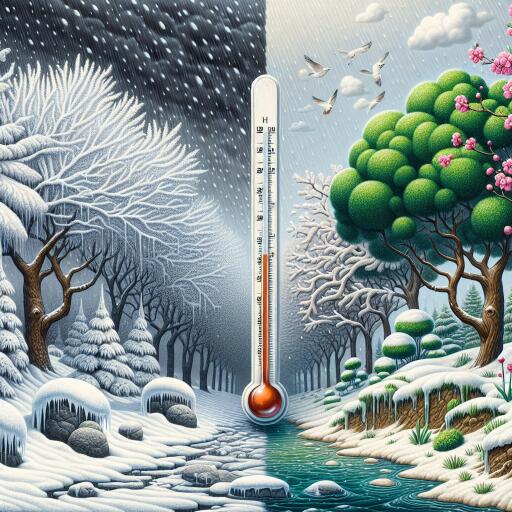
How Climate Change Impacts Winter Weather
As snow blankets vast areas of the U.S., it’s worth considering how our warming planet might influence the winters of the future. While attention often focuses on summer’s rising temperatures—with recent years breaking records for heat—winter months are undergoing subtle but significant transformations due to climate change. A recent survey highlights that 66% of Americans are keenly aware of these changes, attributing weather shifts in the U.S. to global warming effects.
According to climate experts, the persistence of winter does not contradict the reality of climate change. Professor Stuart Evans, a geography expert, explains that while winters are indeed becoming milder, they have by no means disappeared. Instead, the complexities of climate change manifest as altered winter patterns rather than their complete elimination.
Transformation of Winter Storms
A key transformation expected as climate change progresses is an increase in winter precipitation across much of the United States. This could manifest as either rain or snow, elaborates Evans. The underlying reason for this is the warming atmosphere’s capacity to hold more moisture — resulting in more precipitation. In regions where temperatures warm slightly yet remain below freezing, there is potential for increased snowfall.
Different regions will experience unique variations in winter weather. Professor Chris Forest, a specialist in climate dynamics, notes a geographical shift in storm systems. For instance, the Great Plains now experience snowstorms that used to occur further west, caused by these shifting weather patterns. This redistribution of storm activity signifies broader climatic changes at play.
Rising Temperatures and Variable Winters
A warming planet unequivocally impacts winters, though not uniformly across all regions. Instances of unpredictable extreme events, such as sudden heavy snowfalls or unexpected warm spells, are becoming more common. Such fluctuations contribute to an overall erratic weather pattern, leaving communities uncertain about future winter conditions.
Alterations in Freeze-Thaw Cycles
The increase in average temperatures is also modifying freeze-thaw cycles, which can have significant environmental and infrastructural implications. Shorter and milder frost periods can impact agriculture, as crops often rely on a reliable pattern of seasons. Additionally, these changes can strain urban elements like roads and bridges, which suffer from the expansion and contraction caused by these cycles.
Implications for Ecosystems and Biodiversity
Climate change’s effect on winters doesn’t stop at mere temperature and precipitation shifts; it extends into ecosystems, risking biodiversity. Altered hibernation patterns in animals and blooming times in plants can result in mismatches in ecological interactions, threatening species that depend on specific seasonal behaviors.
Preparing for a Changing Winter
Addressing these shifts requires both individual and collective efforts. Communities need to adapt by anticipating changes in water management, agricultural practices, and urban planning to mitigate climate impacts. Understanding and preparation can help manage the ongoing and future challenges posed by our changing winters.
Ultimately, even though winters remain a staple of the calendar, their character continues to evolve. Recognizing these changes is crucial for adaptation and mitigation, ensuring that communities remain resilient in the face of a transforming climate landscape.





Leave a Reply